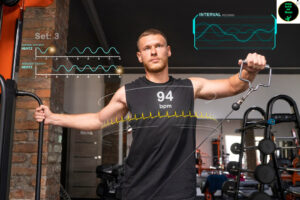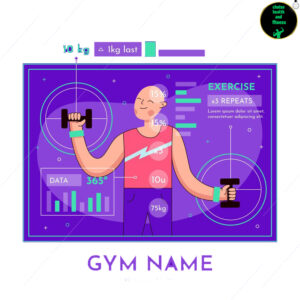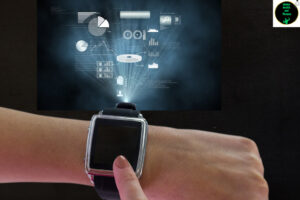The 7 vital Symbiosis of Technology In Health and Fitness
Introduction
In the ever-evolving landscape of modern living, the integration of technology and fitness has become a powerhouse, reshaping the way we approach health and well-being. This symbiotic relationship is not just about counting steps or monitoring heart rates; it’s a comprehensive fusion that has the potential to transform lives. From wearable devices to virtual workouts, the marriage of tech and fitness is creating a paradigm shift in the world of wellness.
Wearable Technology: Beyond the Basics
Wearable technology has emerged as a cornerstone in the integration of technology and fitness. From fitness trackers to smartwatches, these devices go beyond merely telling time or tracking steps. They monitor heart rates, analyze sleep patterns, and even provide real-time feedback on various exercises. The gamification aspect, where users can set and achieve goals, has turned fitness into a dynamic and engaging experience.
- Holistic Health Monitoring: Wearable devices have evolved beyond simple step counters. They now offer comprehensive health monitoring capabilities, including heart rate tracking, sleep analysis, and stress level assessments. This holistic approach provides users with a broader understanding of their overall well-being.
- Real-Time Exercise Feedback: Wearables go beyond passive data collection by offering real-time feedback during workouts. Whether it’s maintaining the right heart rate zone, correcting form, or suggesting intensity adjustments, these devices act as personal trainers on the wrist, enhancing the effectiveness of exercise routines.
- Diverse Activity Tracking: Modern wearables cater to a wide range of physical activities. From running and cycling to swimming and weightlifting, these devices are designed to accurately track and analyze various exercises. This versatility ensures that users receive tailored insights, regardless of their preferred fitness regimen.
- Advanced Biometrics: Wearables are incorporating advanced biometric measurements, such as blood oxygen levels and skin temperature monitoring. These metrics provide deeper insights into the body’s responses to exercise and daily activities, enabling users to make more informed decisions about their health.
- Integration with Smartphones and Apps: Wearables seamlessly integrate with smartphones and fitness apps, creating a cohesive ecosystem. Users can view detailed analytics, set goals, and receive notifications directly on their devices. This integration enhances the user experience and encourages continuous engagement.
- Gamification and Social Connectivity: Wearables leverage gamification elements to make fitness engaging and competitive. Users can participate in challenges, earn badges, and share achievements with friends, fostering a sense of community and motivation. The social connectivity aspect adds a layer of accountability and support to the fitness journey.
- Customizable Watch Faces and Widgets: Wearable technology allows for personalization through customizable watch faces and widgets. Users can prioritize the fitness metrics they find most relevant, such as steps taken, calories burned, or heart rate, creating a tailored and user-friendly interface.
- GPS and Navigation Features: Many wearables come equipped with GPS functionality, enabling accurate tracking of outdoor activities. Whether exploring new running routes or cycling trails, users can rely on their devices to provide precise location data and navigation assistance.
- Water Resistance and Durability: Recognizing the diverse nature of fitness activities, wearables are designed to be water-resistant and durable. This ensures that users can wear their devices during water-based workouts or in challenging environmental conditions without compromising functionality.
- Health Ecosystem Integration: Wearables are increasingly becoming part of broader health ecosystems. They can sync with electronic health records, share data with healthcare professionals, and even integrate with smart home devices to create a seamless environment that supports overall health and wellness
Data-Driven Fitness: The Power of Analytics
One of the remarkable aspects of technology in fitness is the ability to collect and analyze data. Fitness enthusiasts now have access to a wealth of information about their activities, allowing for personalized insights and recommendations. Whether it’s calories burned, distance covered, or workout intensity, this data-driven approach empowers individuals to make informed decisions, optimizing their fitness routines for better results.

Virtual Fitness: Breaking Barriers
Technology has transcended the limitations of physical proximity, making fitness accessible to anyone, anywhere. Virtual fitness platforms, offering a plethora of workouts and classes, have become immensely popular. Whether joining a live-streamed yoga class or following a pre-recorded high-intensity interval training (HIIT) session, individuals can participate in diverse workouts without leaving the comfort of their homes. This accessibility has democratized fitness, breaking down barriers to entry and fostering inclusivity.

Smart Nutrition: Fueling the Future
Nutrition is a critical component of overall well-being, and technology has stepped in to revolutionize how we approach it. Apps and platforms designed to track dietary habits, provide nutritional information, and even suggest personalized meal plans are becoming integral to a holistic approach to health. Smart kitchen appliances and devices further aid in meal preparation, ensuring that healthy eating aligns seamlessly with our fast-paced lives.

AI and Personalized Fitness Plans
Artificial Intelligence (AI) has brought a new dimension to personalized fitness. Machine learning algorithms analyze vast amounts of data to understand individual preferences, fitness levels, and goals. This information is then used to create tailored workout plans and adapt them over time as users progress. AI coaches provide real-time feedback, mimicking the guidance of a personal trainer, and offer a level of customization that was once unimaginable.

Challenges and Considerations
While the integration of technology and fitness brings forth numerous benefits, it is not without challenges. Privacy concerns regarding the vast amounts of health-related data being collected, the potential for over-reliance on technology, and the digital divide that limits access for some demographics are all issues that need careful consideration. Striking a balance between harnessing the advantages of technology and maintaining a mindful approach to its use is crucial.

The Future of Fitness: A Connected Ecosystem
Looking ahead, the future of fitness lies in a connected ecosystem where various technologies seamlessly work together. Imagine a scenario where your wearable device communicates with your virtual fitness platform, which, in turn, syncs with your AI-driven nutrition app. This interconnected approach holds the promise of providing a comprehensive and cohesive solution to health and wellness.

In conclusion
the integration of technology and fitness is not a passing trend but a transformative force that continues to reshape the way we prioritize our health. From wearables and virtual fitness to AI-driven personalization, the synergy of technology and fitness is creating a holistic approach that empowers individuals to take charge of their well-being. As we navigate this dynamic landscape, the key lies in leveraging technology responsibly, ensuring that it enhances rather than replaces the fundamental aspects of a healthy lifestyle.





